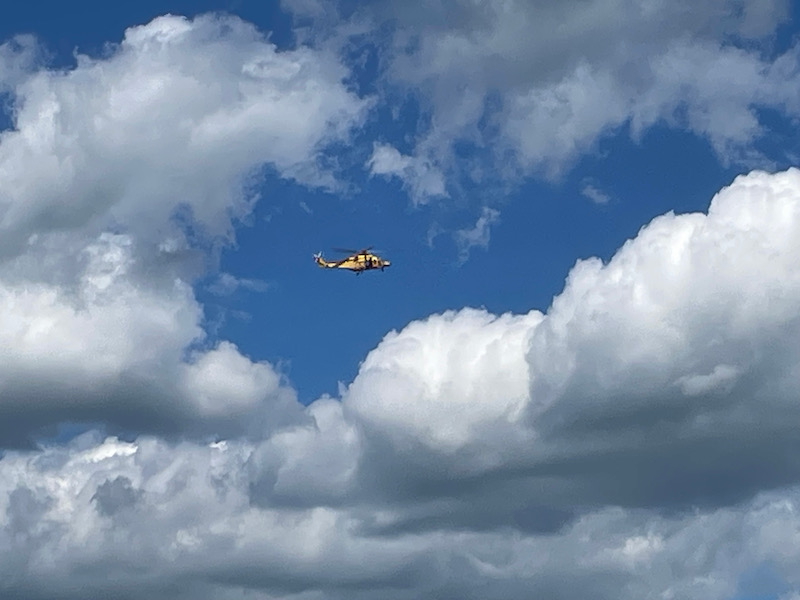Our Blog - Tuscany 2024 Trip - Montalcino, Italy
Our first Tuscan "wine stop" was Montalcino. There has been a settlement here since Etruscan times. It is first mentioned in historical documents in 814 AD which suggests there was a church here in the 9th century, most likely built by monks associated with the nearby Abbey of Sant'Antimo (which we will visit next). The town takes its name from a variety of oak tree that once covered the terrain. It was a walled city, and there are around 4 kilometers of city walls, 13 towers, and 6 gates.
During medieval times the city was known for its tanneries and for the shoes and other leather goods that were made from the high-quality leathers that were produced there. Then wine production took off, first with a Moscadello sweet white wines, and then with the now-somewhat-famous Brunello di Montalcino. Brunello di Montalcino is made from a type of grape called "sangiovese grosso", which are grown here. In the 1960's, there were only 11 wine producers here, and today there are over 200 producers that produce some 330,000 cases (not bottles) of the wine annually. There are actually 3 types of wines produced here from the same grapes: Brunello di Montalcino (which must be aged five years prior to release), Riserva (which must be aged 6 years), and Rosso di Montalcino (aged only 1 year). Needless to say, we bought a little bit of wine here.
We parked nearby and then walked up through the Porta al Cassero, one of the 6 remaining gates to the 13th century city walls. Just inside the gate is the Fortress of Montalcino, which was built at the highest point of the city in 1361.
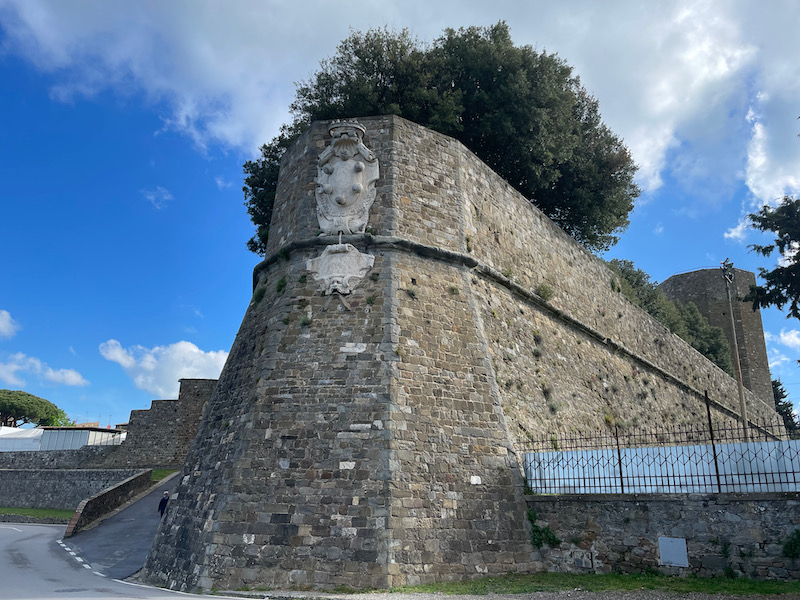
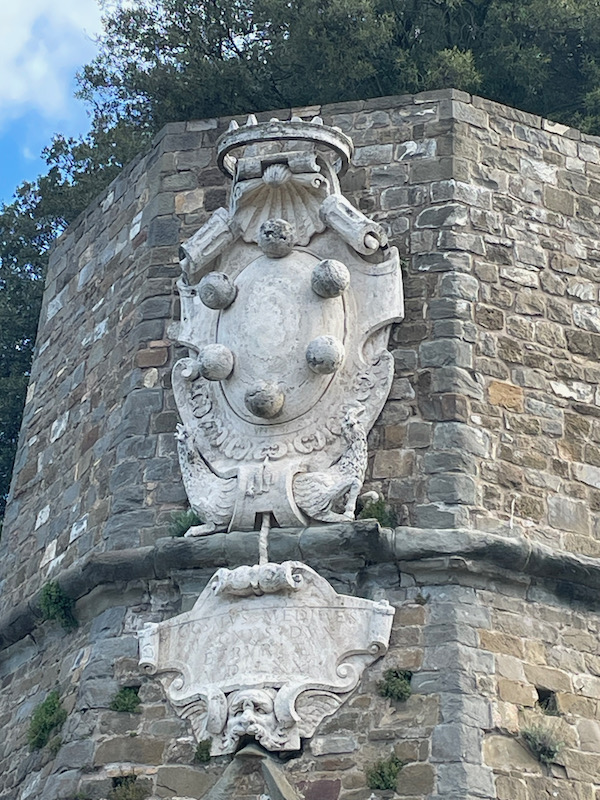
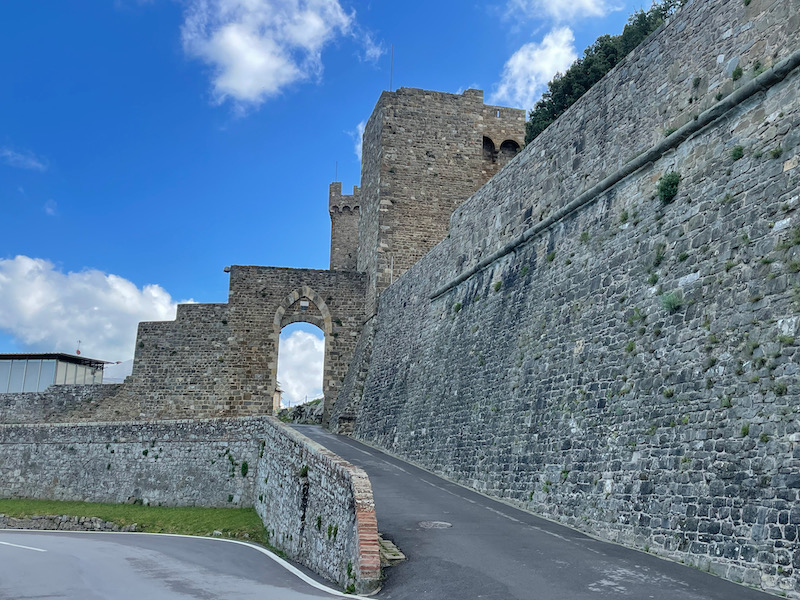
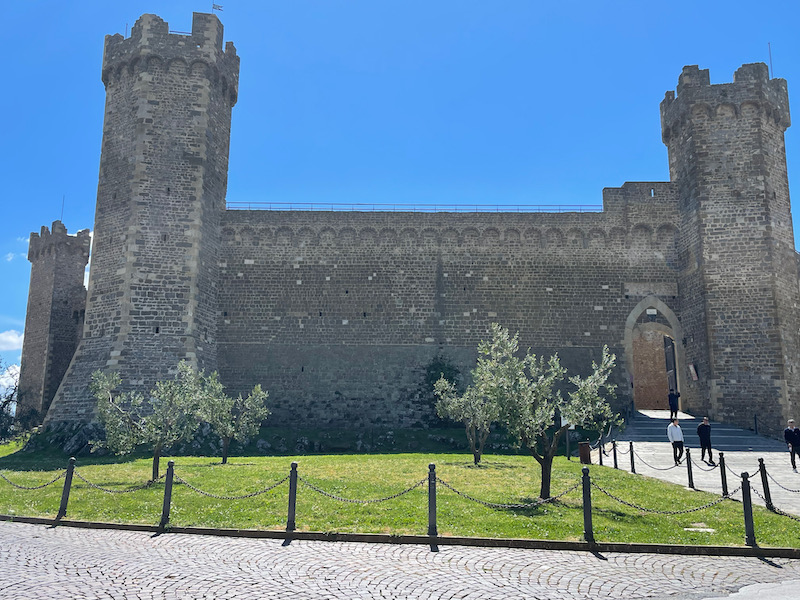
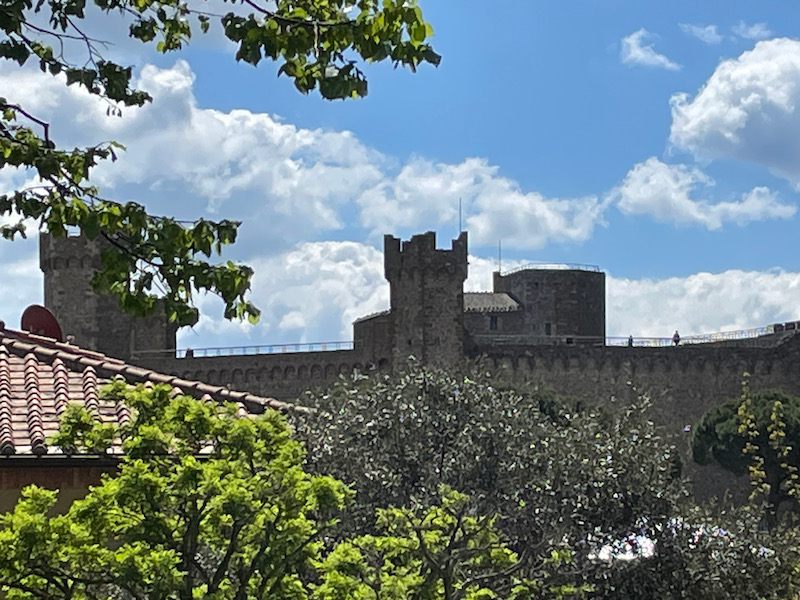
This was a cute little coffee break place, with the inside having some very nice decor.
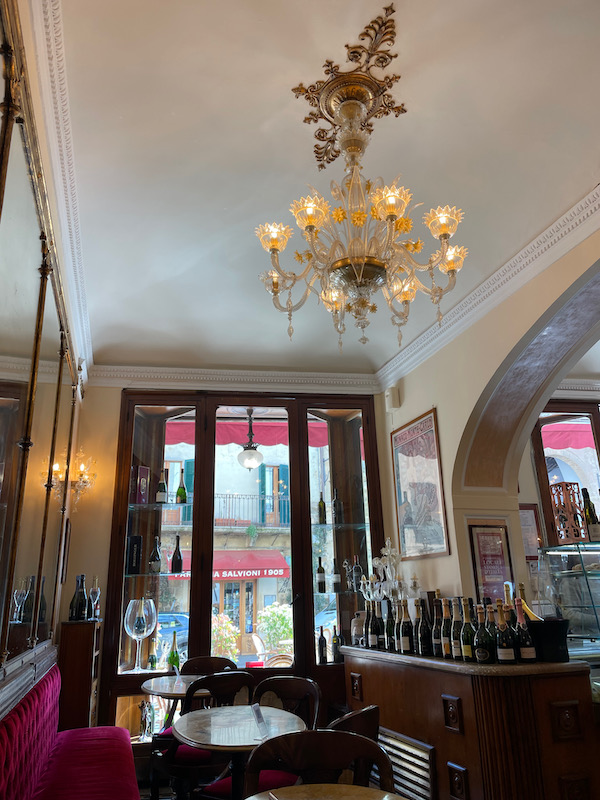
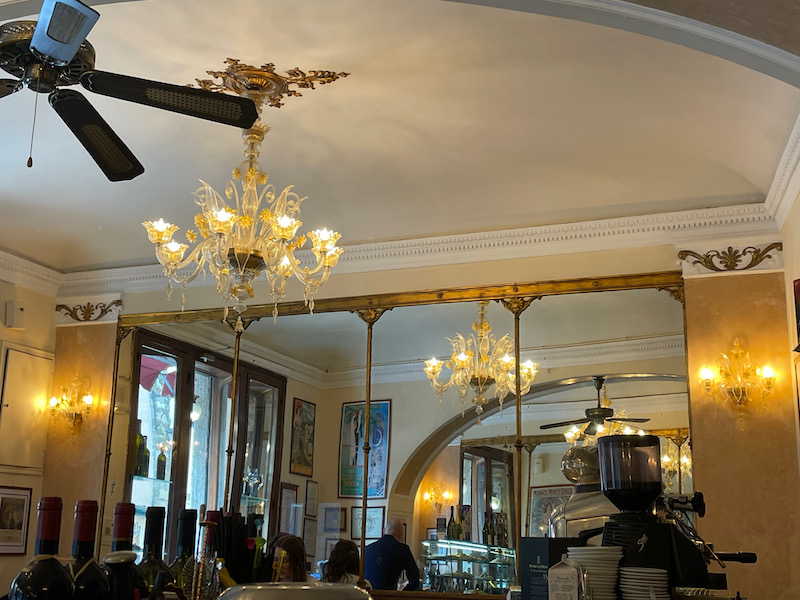
The main square of Montalcino is Piazza del Popolo. The main building in the square is the town hall, also called Palazzo dei Priori, which dates from the late 13th century. The palace shows the coats of arms of the various mayors who have governed the city over the centuries. It also has a very tall medieval tower. Under the tower is another loggia, this one containing a statue of Cosimo Ist. Across from this is a Renaissance loggia with 6 arches, which dates to the 14th century. As we walked by, there was a cellist playing under the arches of the loggia.


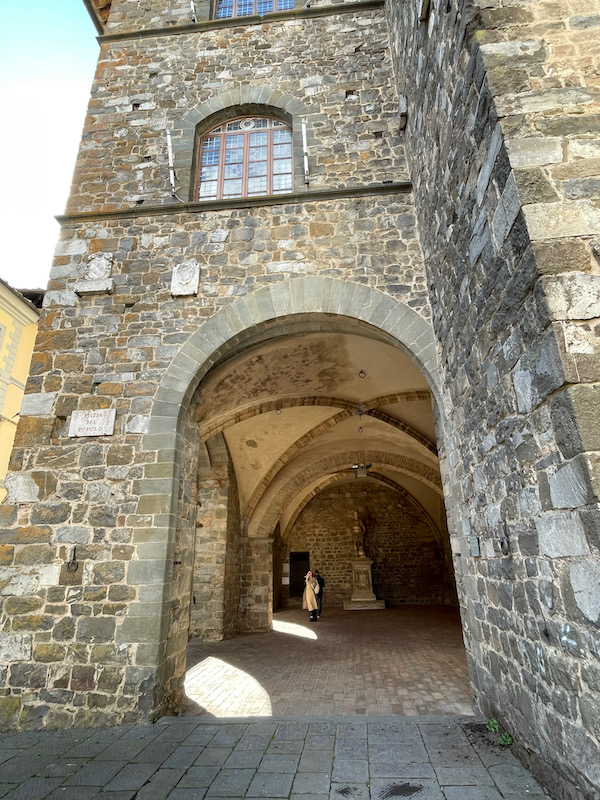
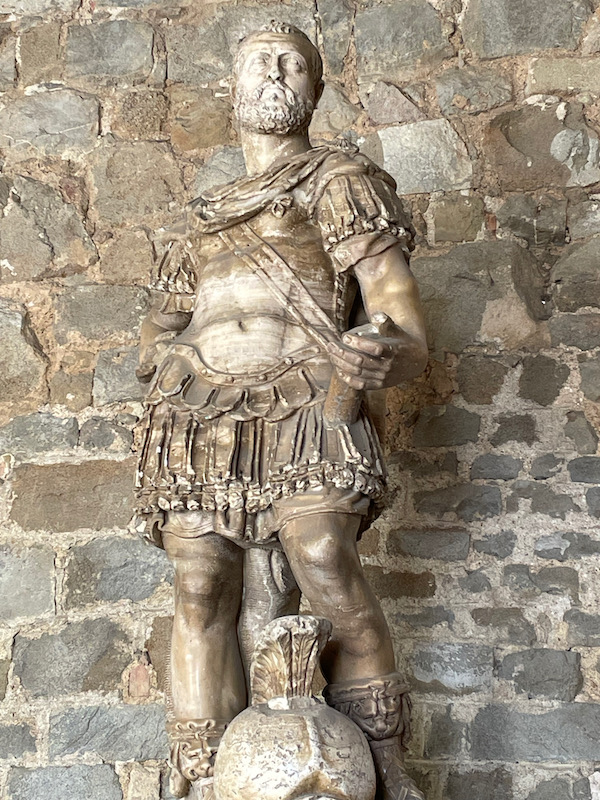
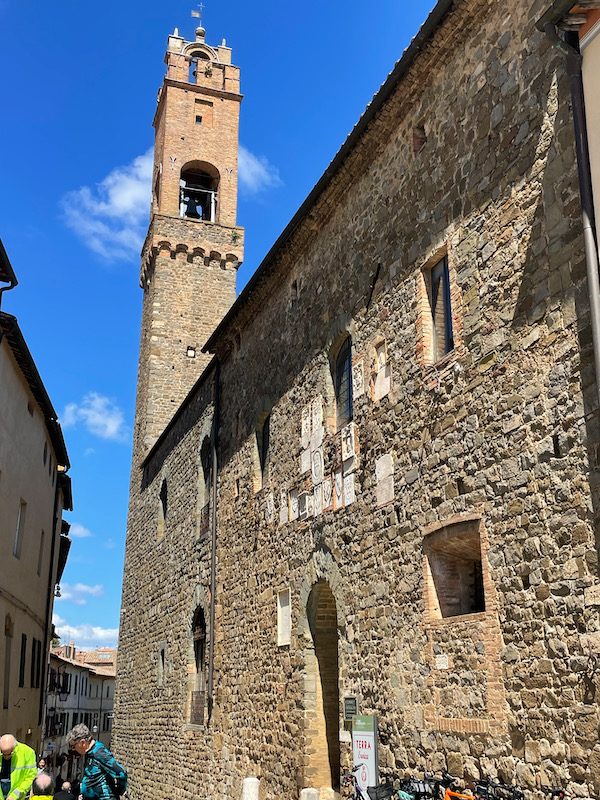
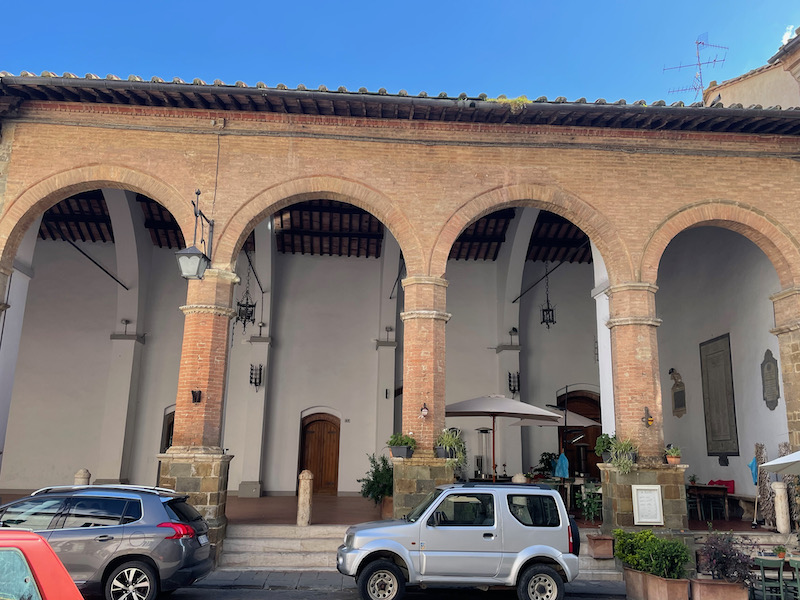
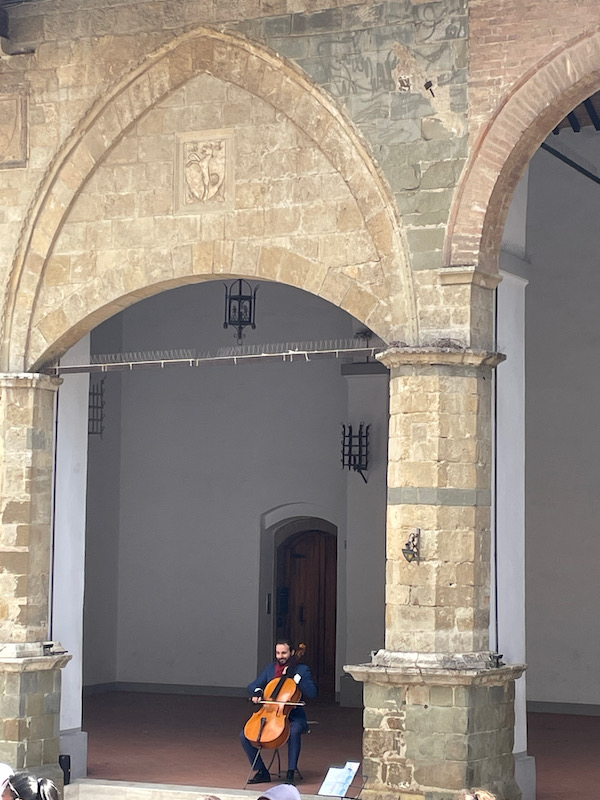
The Fonti Castellane is an old traditional wash-house that would have been center of village life in the middle ages. It would have been used by women to wash clothes, to draw water to drink, and to water horses, mules and donkeys. The springs that fed the wash-house provided water for other activities as well, such as pottery kilns, olive oil kilns, waxworks, and tanneries.
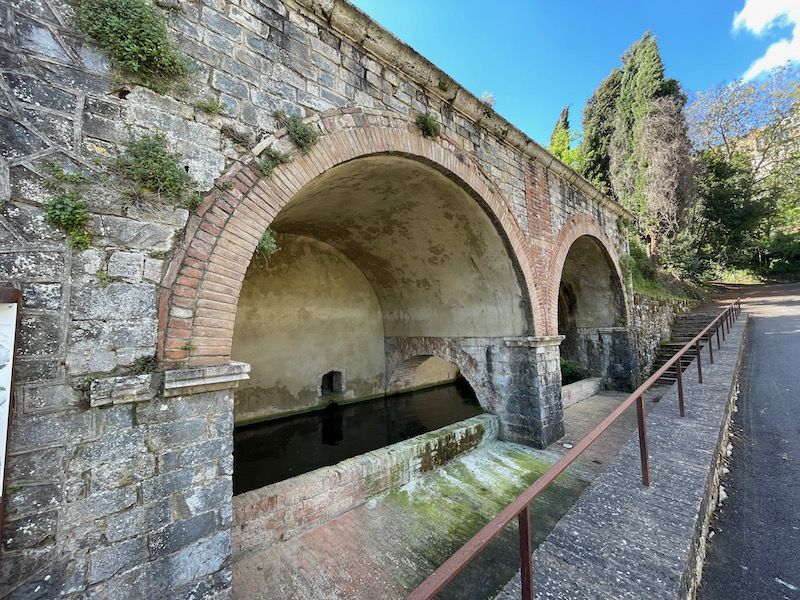
We walked up and down and up and down and finally got to another gate at the other end of the town .. Porta Burelli that dates from the 13th century.
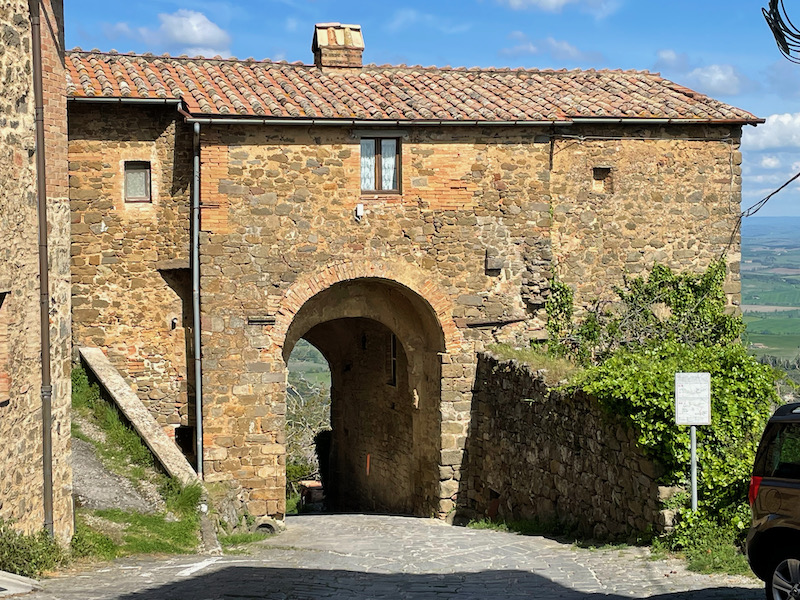
The Santuario di Maria SS Del Soccorso dates from the 14th century, built in 1330 on the site of a medieval church. It is quite interesting in that it looks like 3 very different pieces that have been put together. This is actually entirely possible since the brick bell tower is probably from the 17th century enlargement and the white marble façade dates from 1794.
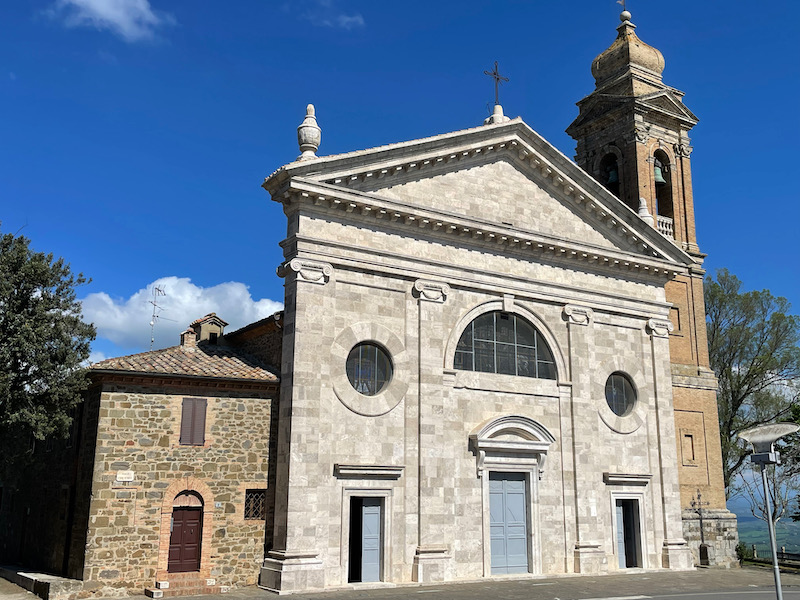
The interior is more modern than some of the other churches we have seen (note that this one does not have a wooden ceiling). The main altar is Baroque and has two angels on either side of Christ at the top. You an see the "M" (for Maria) in a couple places: in the wooden carved "new" altar and also in the floor. One of the statues shows Michael the archangel slaying the dragon ... which we have seen in several churches in the area.
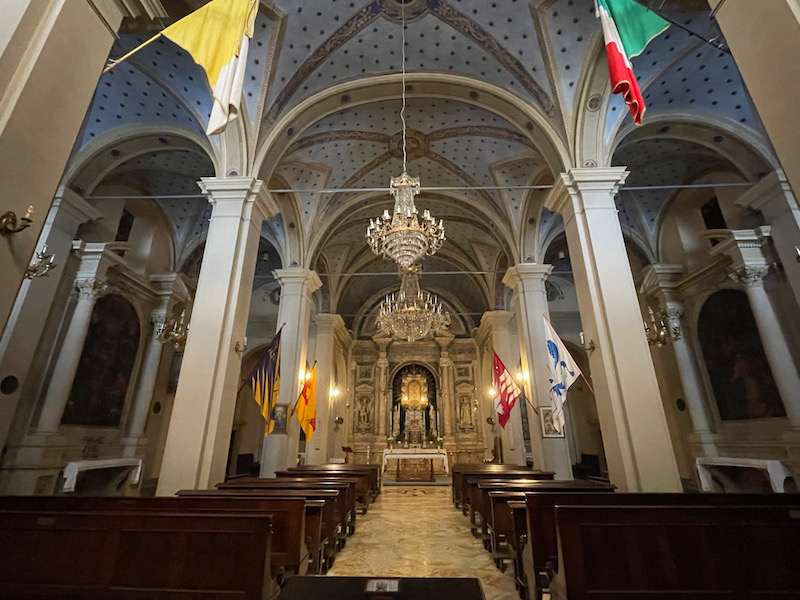
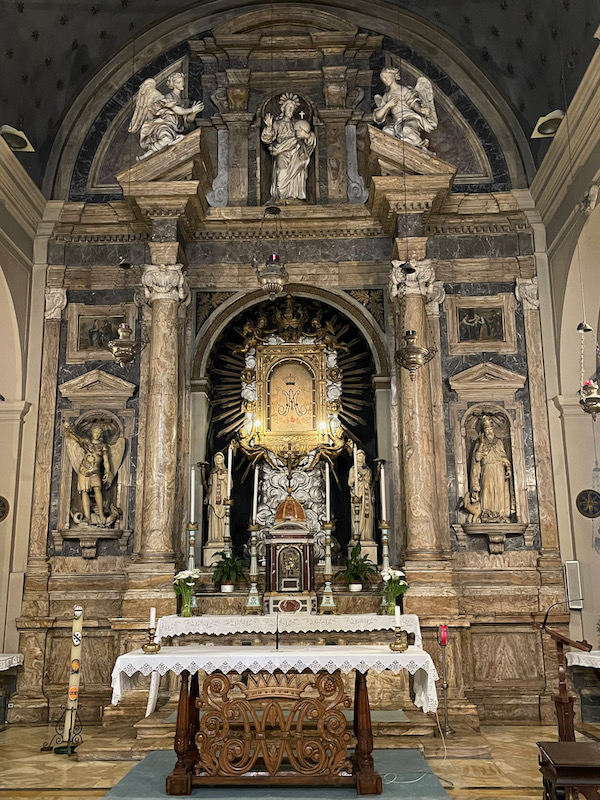
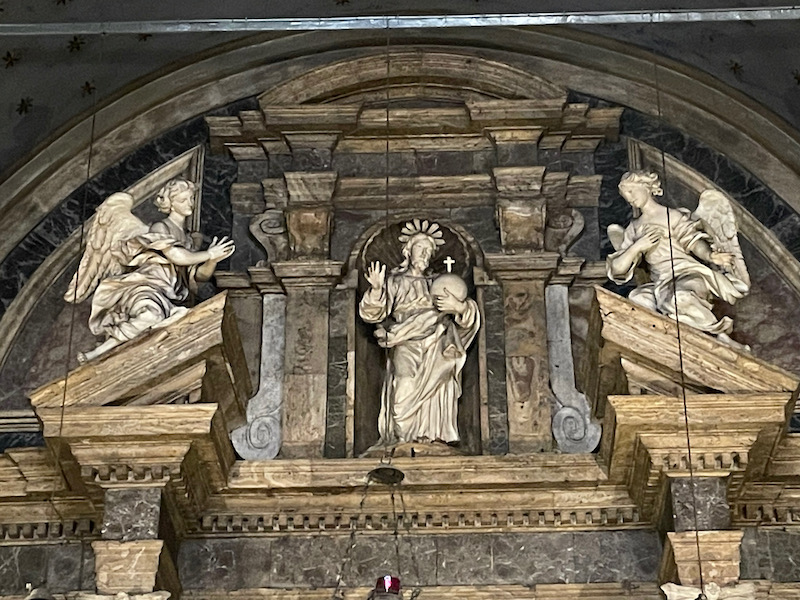

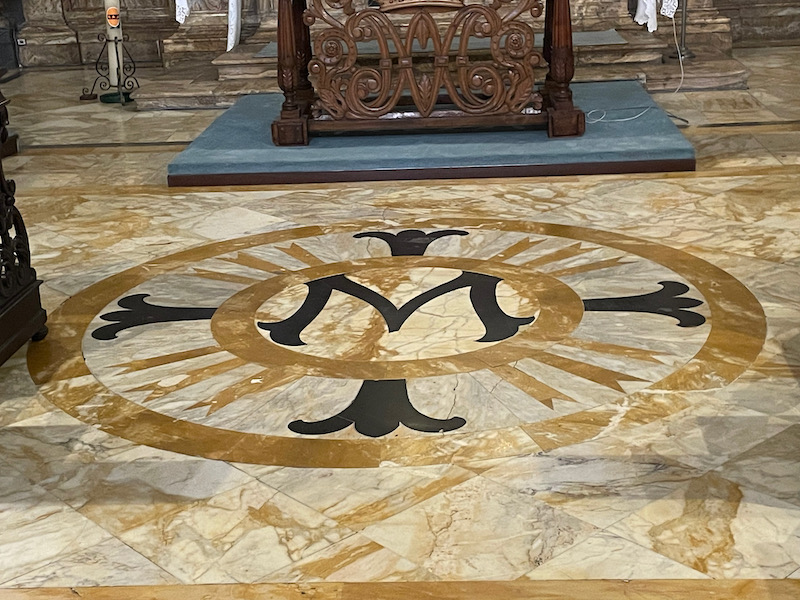
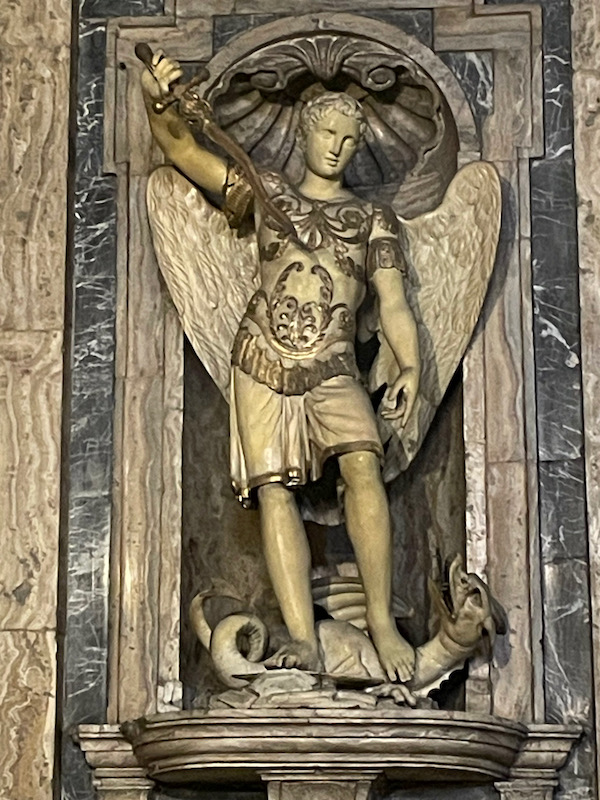
There is also a Duomo, or cathedral, in Montalcino. The first place of worship in Montalcino, dedicated to the Holy Savior, was a Romanesque parish church dating back to the 11th century. It was elevated to the status of "cathedral" in 1462 by Pope Pius II. The ancient church was demolished in 1817 and completely rebuilt in neoclassical style, opening in 1834. The façade features 6 Ionic columns holding up a marble cornice with an inscription (in Latin) which translates to "There is salvation in no on else". The bell tower dates back to the 18th century, when it was built next to the ancient Romanesque cathedral.

The interior is very "clean", keeping with the Neoclassical style. Again, we see Michael the archangel slaying the dragon. The high altar dates from 1832 and if you look closely, you can see a "temple" in the middle with a triangular tympanum supported by 4 columns and decorated with a bas-relief depicting the Lamb of God.
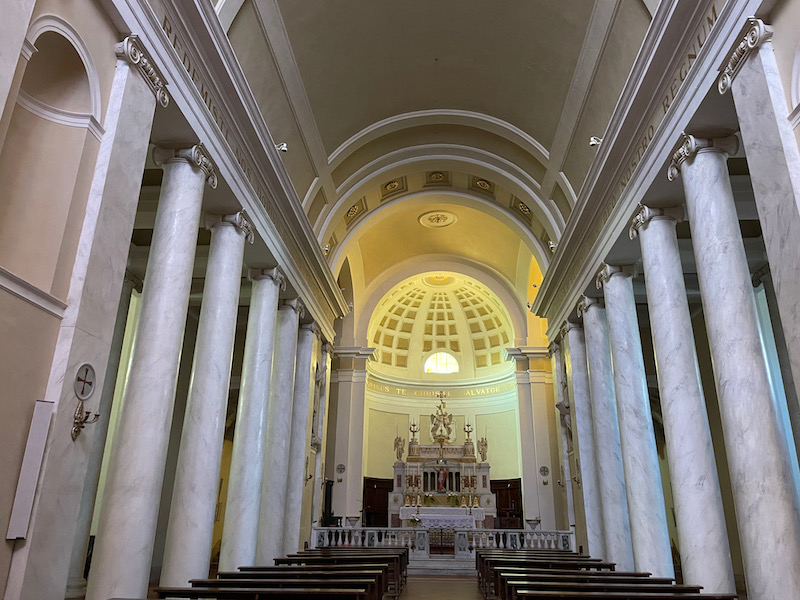
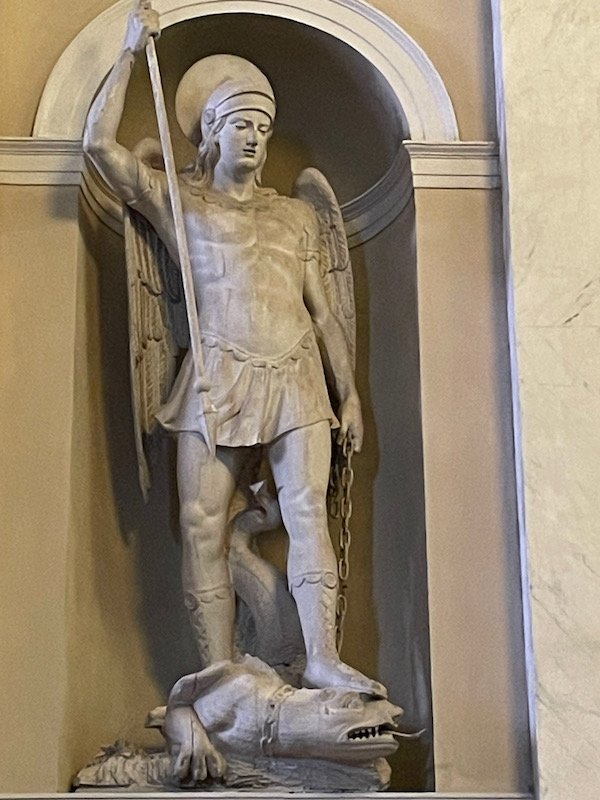
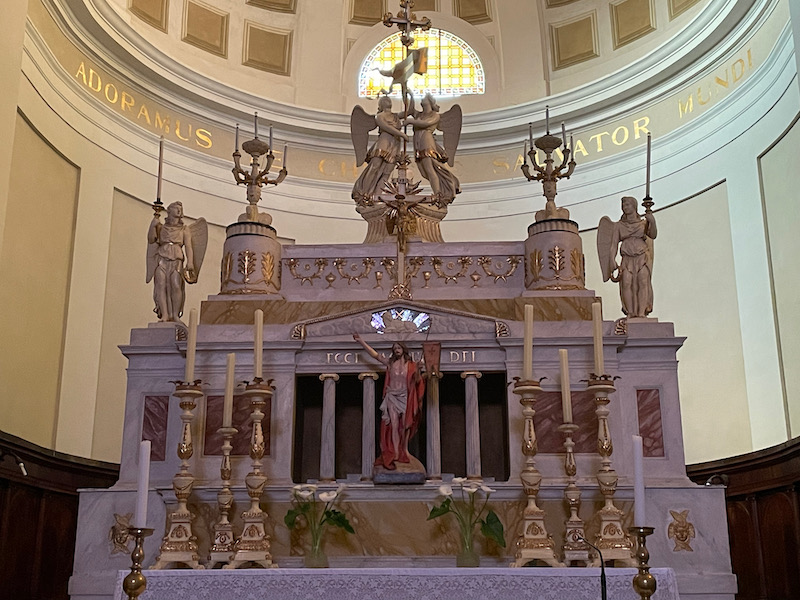
In the first chapel of the northern nave, the baptistery, are some fragments have been reassembled of a travertine sculpture depicting Christ in a mandora almond between two angels, from the 2nd half of the 11th century. The baptismal font was created in 1933.
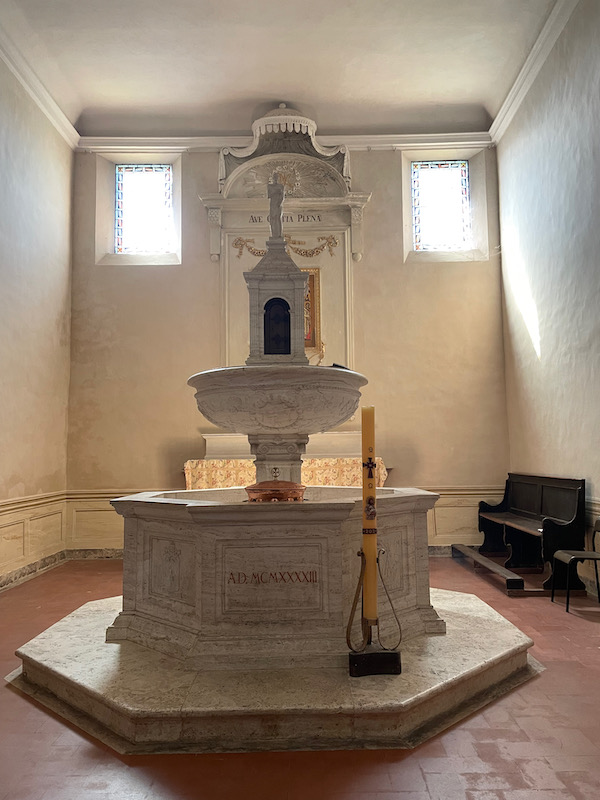
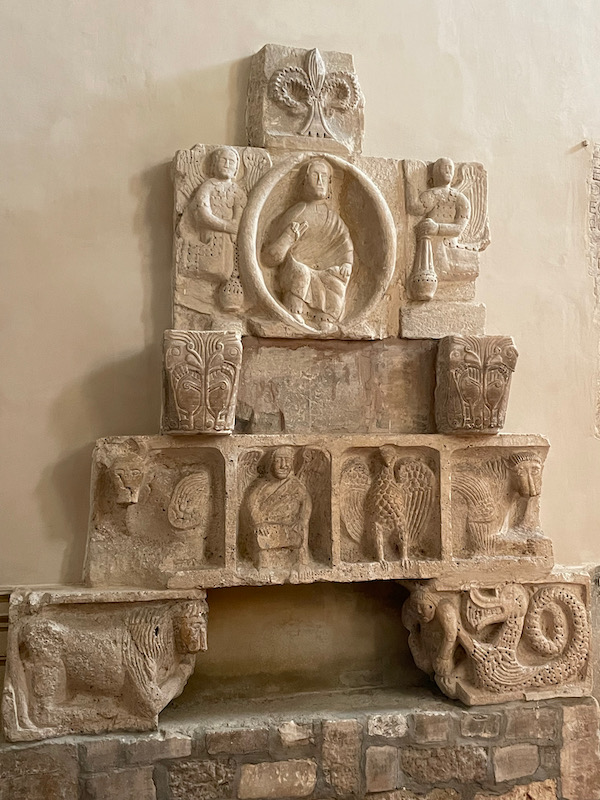
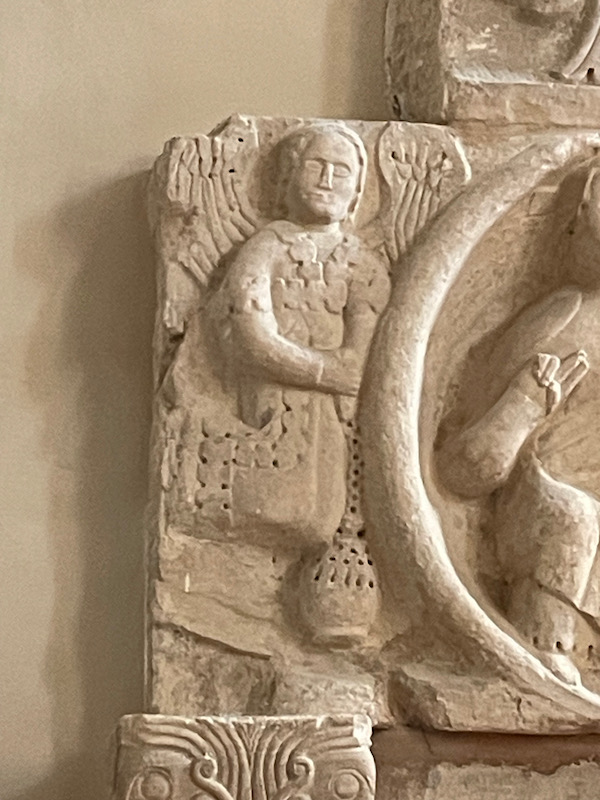
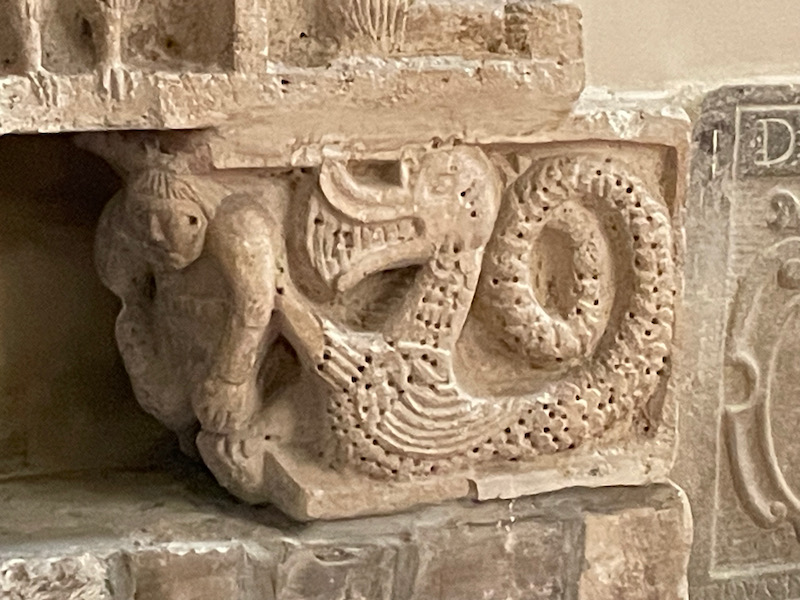
Then just a view looking out over town from the Duomo.
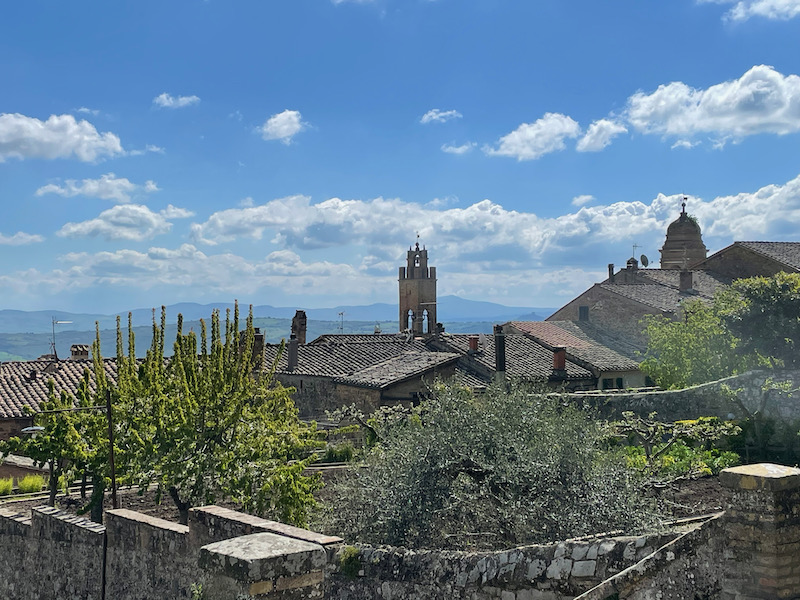
Near the main square is the Sant'Agostino Church, which was built by the Augustinians in 1227 and then rebuilt in Gothic style in 1380. In 1782, the Augustinian convent was suppressed and the church and convent were used as a seminary. The convent part was turned into a nursing home in 2014. You can see how the adjacent cloisters now has a glass roof and has a little shop. The church itself has some very nice 14th and 15th-century frescoes which are in the process of being restored. This is another simple church interior with just a single nave and a wooden roof. I took quite a few pictures of the frescoes.
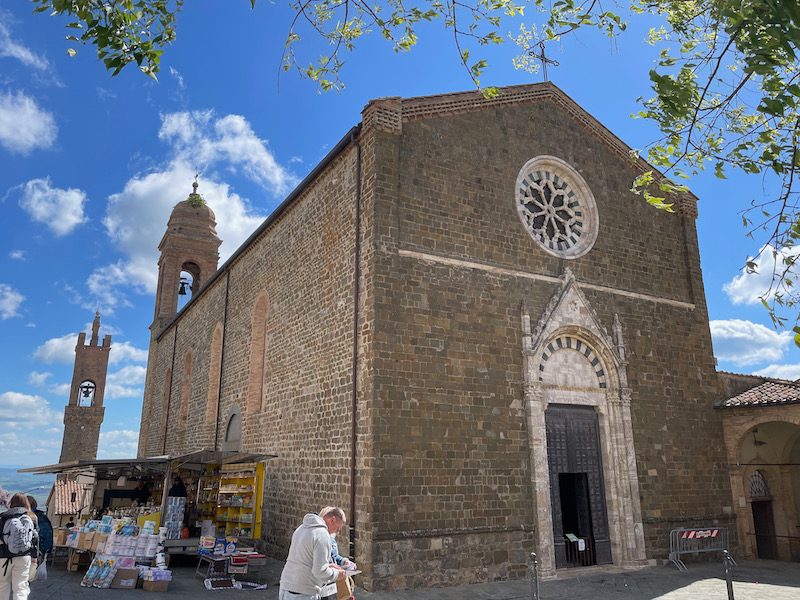
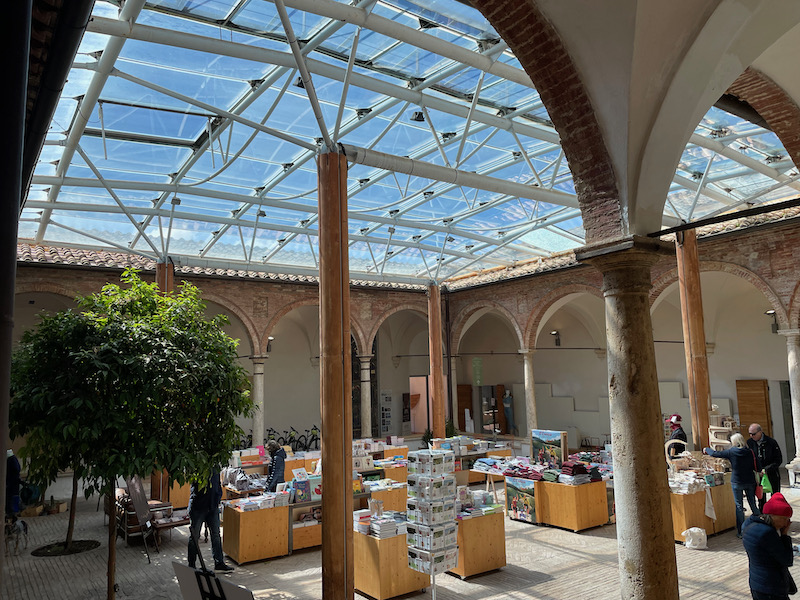
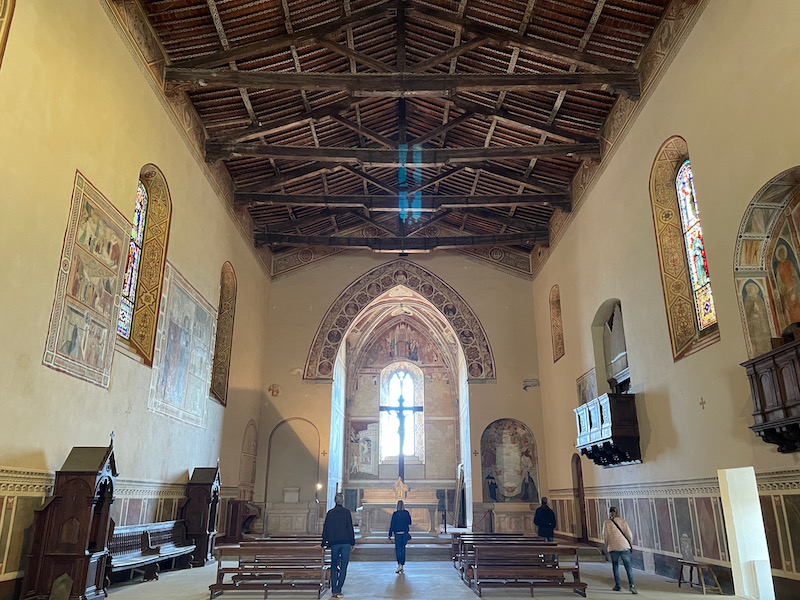
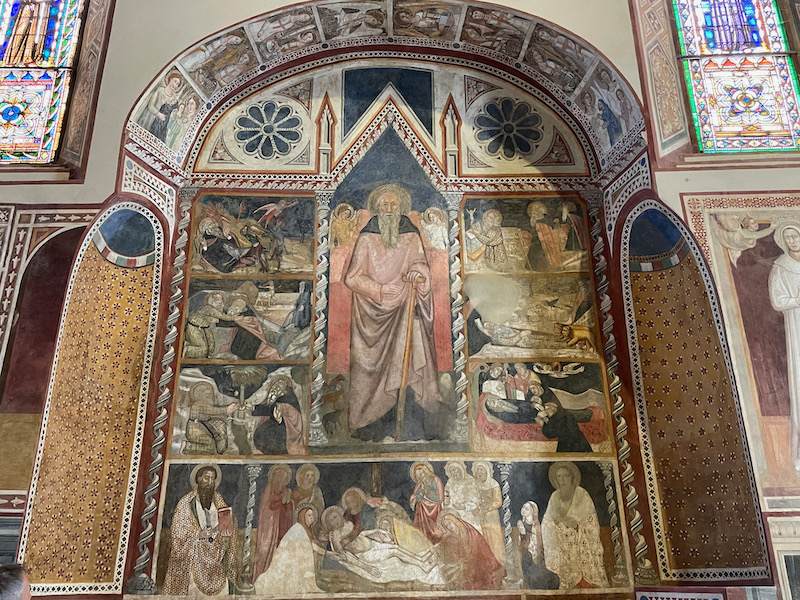
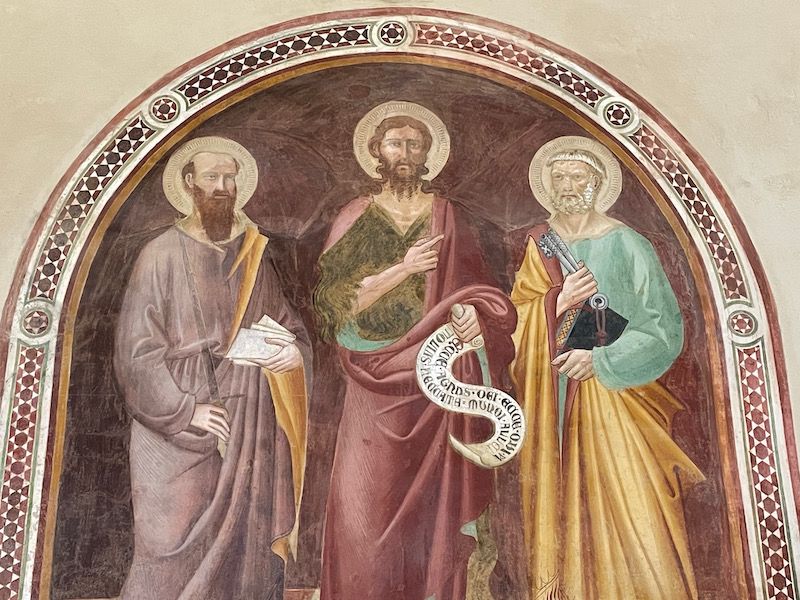
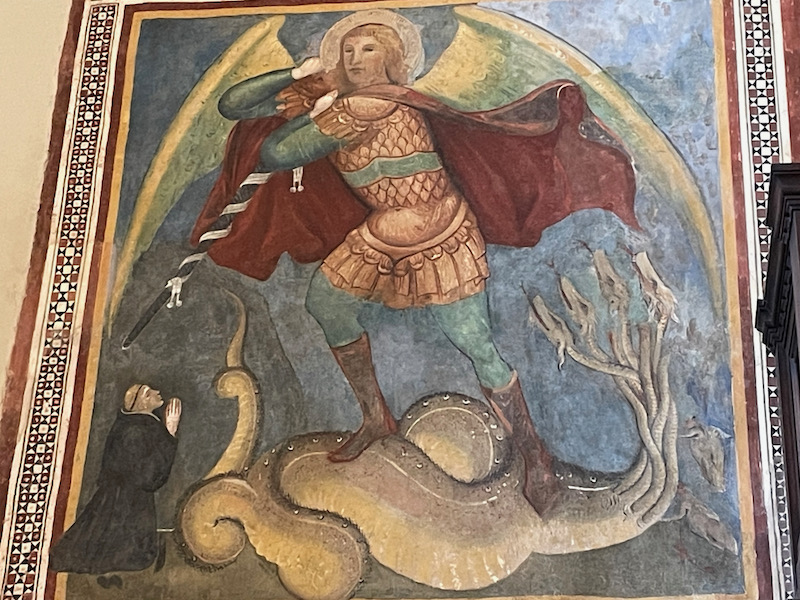
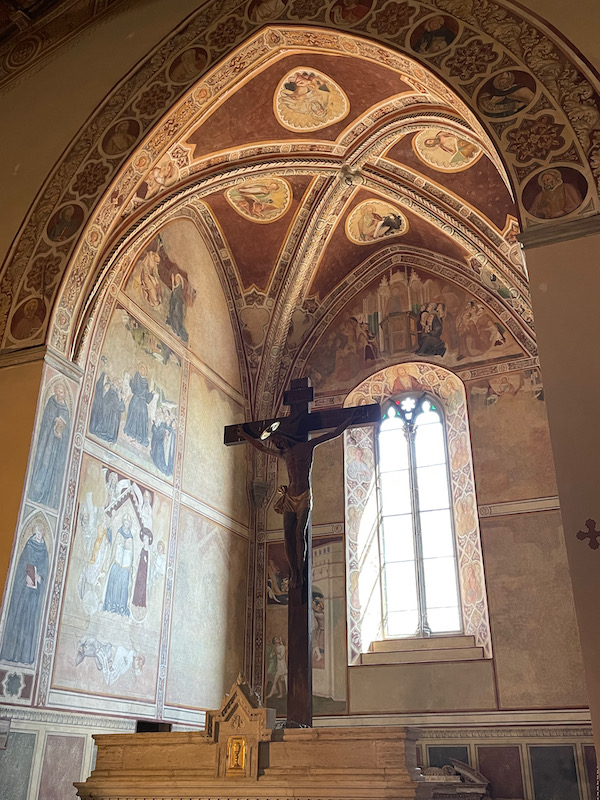
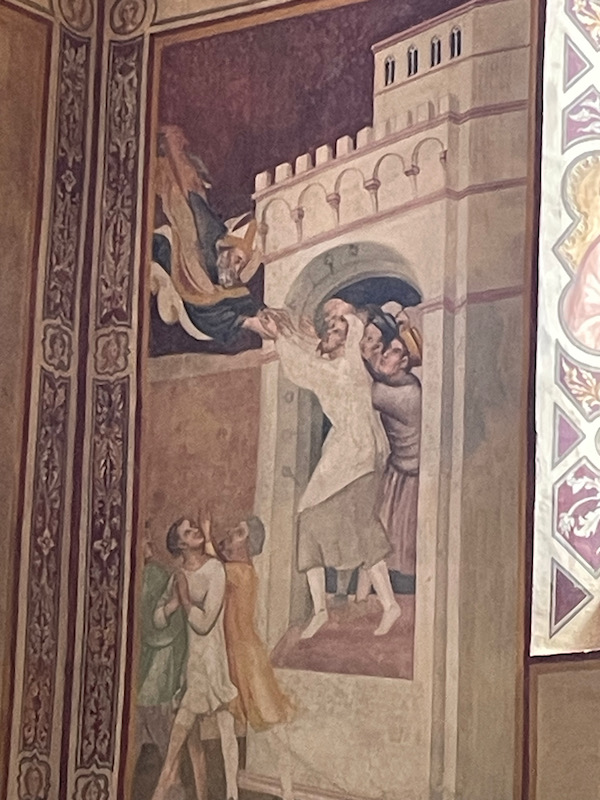

As we were leaving, we grabbed a couple pictures of the surrounding Tuscan countryside.
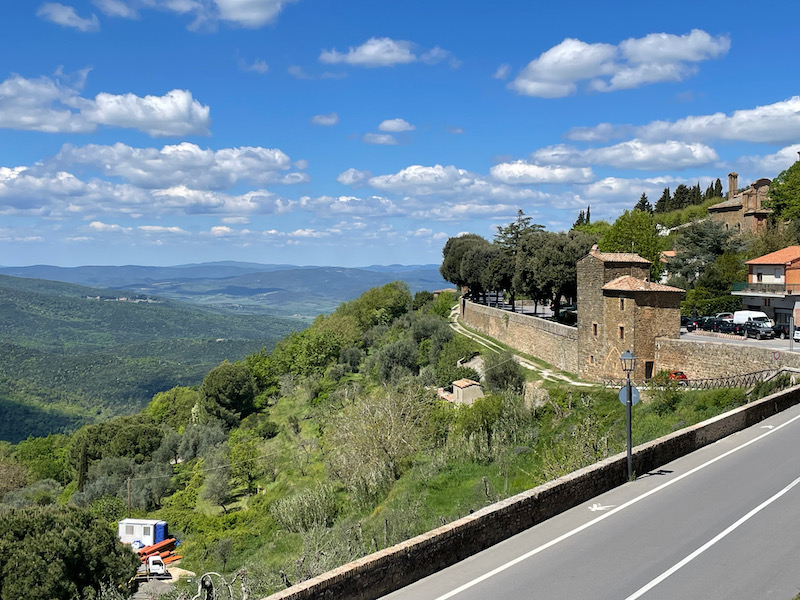
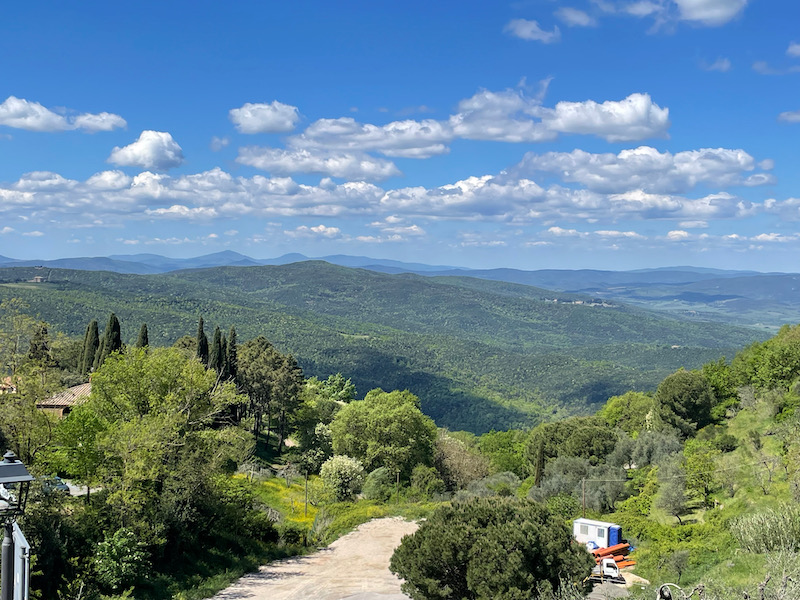
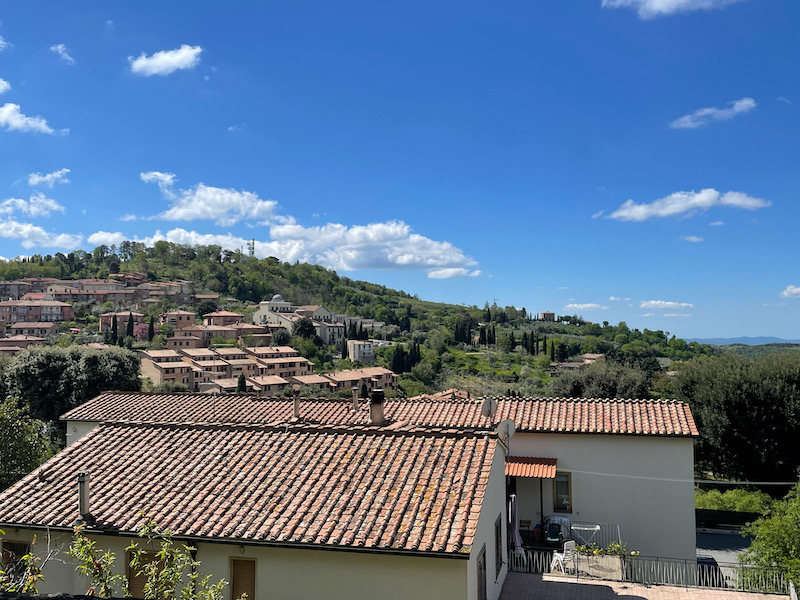
We got a bit delayed on our 6 kilometer drive to our hotel in the next town because the road was closed. Why? No idea ... we assume an accident of some kind because after sitting for 10 minutes, an air ambulance arrived. When traffic started moving again, we could still see the air ambulance over in a field but there was no sign of any accident (no wrecked cars, so broken glass, nothing).
